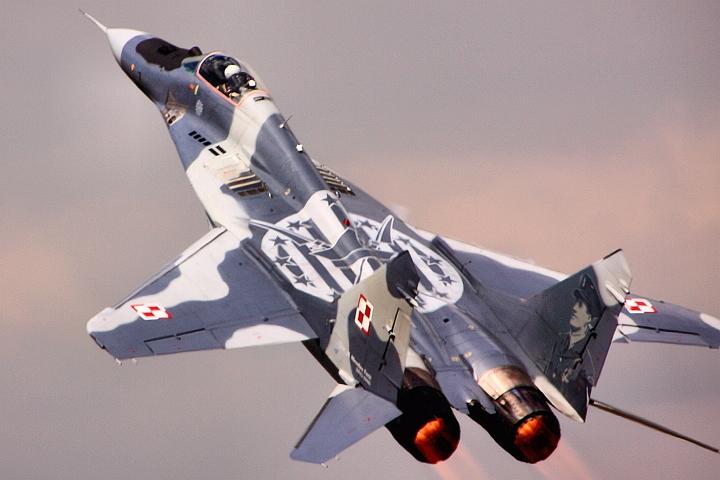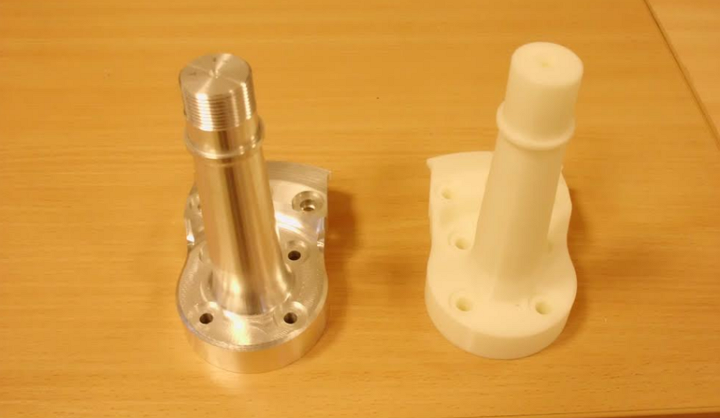The MiG series of aircraft had vexed Western pilots in combat situations since the Vietnam war.
During the mid 1960s, pilots of supersonic fighter bombers such as the F-105 Thunderchief found themselves to be vulnerable to the much more maneuverable MiGs, and it wasn’t until the end of the decade when the USAF committed to the ‘F-X’ program, that Western fighter dedicated to air superiority came on the horizon. The McDonnell Douglas F-15 Eagle swung in the balance once again, but the MiGs were still considered fearsome opponents.
Until the MiG-29 Fulcrum fighter came out from behind the Iron Curtain on September 10, 1989, when Hungary opened the country’s border with Austria, the mystery was intact. The story unfolded completely one day after Christmas in 1991 when the Soviet Union ceased to exist and the mythic status of the MiGs began to dissolve.
That paved the way for military analysts to get an intimate look at the MiG-29 as the unified German government kept a number of the fighter aircraft once operated by the East German forces. As of 1991, some of the MiG-29s were based at Preschen, near the Polish border, and once the border dissolved, West German pilots and technicians descended on the base intent on studying the planes with the aid of former East German Nationale Volksarmee pilots.
The Fulcrum proved a dangerous weapon. Western pilots admired the MiG’s power and maneuverability, though they weren’t as impressed with the associated radar and computer systems. While the Fulcrum was acknowledged as a capable machine in a dogfight, an inadequate fuel capacity, indifferently effective radar, and a less than impressive head-up display hampered pilots who were used to more sophisticated craft.
But given all those factors, a small number of MiG-29s are still being upgraded in Poland with new mission computers, navigation technology and radios, and at Military Aviation Plant No. 2 (Wojskowe Zakłady Lotnicze Nr 2),  designers and engineers are using 3D printers manufactured by Zortrax as a tool to aid them in many of these upgrades. The 3D printers are being used for a variety of parts, and the teams there say the technology has significantly reduced the time needed to carry out the upgrades.
designers and engineers are using 3D printers manufactured by Zortrax as a tool to aid them in many of these upgrades. The 3D printers are being used for a variety of parts, and the teams there say the technology has significantly reduced the time needed to carry out the upgrades.
“A 3D printer offers the opportunity for rapid prototyping – should there be any discrepancies between the geometry delivered by the manufacturer and the actual geometry, this is in fact the fastest way to dispel any doubts. If we used only the conventional methods, even with scanners or programs applied in reverse engineering, the time and cost outlays would still exceed the cost of 3D printing,” says Albert Szparga of WZL Nr 2 S.A.
Zortax says that specific components are designed by the engineers at Plant No. 2 for the MiG-29, and the Su-22, and the airframes can then be machined within a couple of hours following the completion of their 3D printed prototypes. Once a design passes a series of tests, production of the newly created elements begin on a small scale. They say 3D printing technology shortens the time between the design stage and series production, and that means that the modernization process for the parts is considerably more effective.
The first MiG-29s were delivered to Poland in 1989–1990, and they were based at Mińsk Mazowiecki and used by the 1st Fighter Aviation Regiment. After the retirement of a wing of MiG-23s in 1999 and of MiG-21s in 2004, Poland was left with just a group of nearly two dozen MiG-29s as the sole fighters they had available to their air force. As of 2008, Poland was the single largest user nation of MiG-29s in NATO, and they hope that by modernizing those fighter planes, they may be capable of serving through 2025.
Zortrax says the use of 3D printers allows engineers to tailor the MiG-29 and the Su-22 aircraft frames and associated parts to meet NATO standards. The printers are being used to model the axles for the aircraft’s main landing gear and elements of the rudder control mechanism.
Zortrax manufactures their 3D printers from a headquarters located in Olsztyn, Poland, and currently exports them to markets in Asia, Australia and the Americas.
Do you know of any other projects which are using AM and 3D printing to modernize aircraft? Let us know in the Zortrax and MiG-29 forum thread on 3DPB.com.
Subscribe to Our Email Newsletter
Stay up-to-date on all the latest news from the 3D printing industry and receive information and offers from third party vendors.
You May Also Like
Blue Laser Firm NUBURU Explores Strategic Alternatives Amid NYSE Compliance Challenges
In a strategic move reflecting the current macroeconomic landscape, NUBURU, Inc. (NYSE American: BURU), a pioneer in industrial blue laser technology, has announced its decision to explore a wide array...
Flexible Wireless Temperature Sensor Made with 3D Printing
Researchers from the University of Glasgow, University of Southampton, and Loughborough University have developed an innovative flexible temperature sensor utilizing microwaves and 3D printing technology. As detailed in an article...
3D Printing Laser Maker NUBURU Faces NYSE American Compliance Challenge
NUBURU (NYSE American: BURU), known for its innovative high-power and high-brightness industrial blue laser technology, has received a non-compliance notice from the NYSE American, formerly the American Stock Exchange (AMEX)....
3D Printing Resilience: the Case of Fiber Lasers
Since at least 2020, additive manufacturing (AM) has become more and more synonymous with the concept of supply chain resilience. In 2024, there is almost guaranteed to be a striking...

































